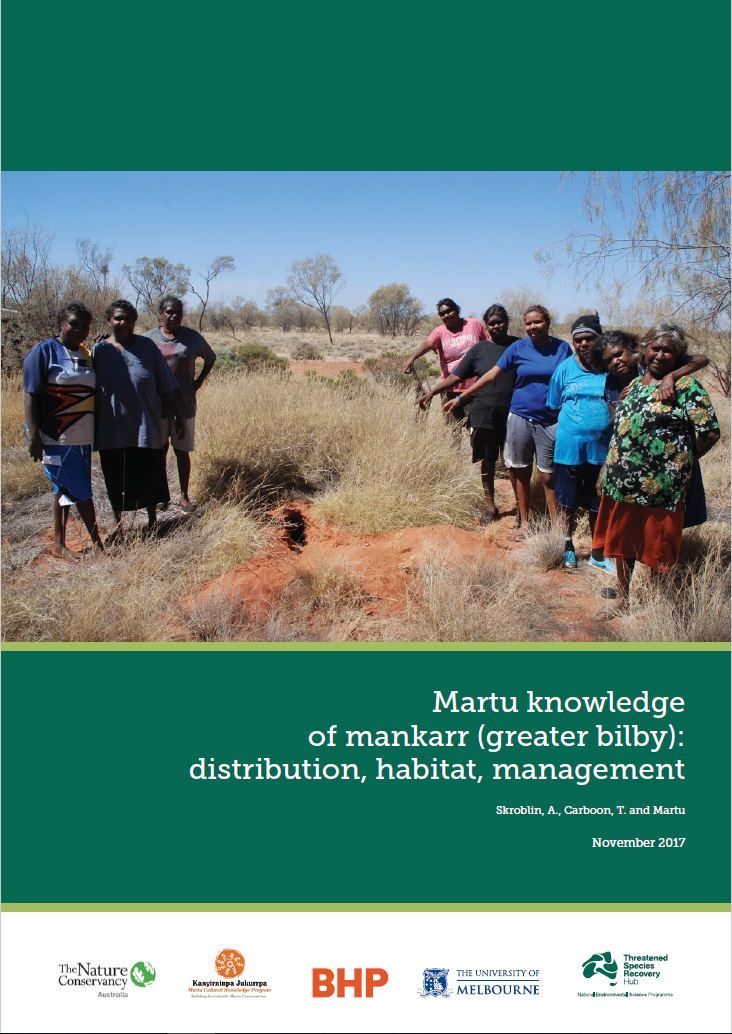It’s all about the bilby
Working with Traditional Owners to save the Greater Bilby.
Of all the small, brown, generic marsupials of the Australian Outback, the bilby is not one of them! These endearing, large and strikingly marked bandicoots were once found across the Australian continent from the Great Dividing Range in the east to the turquoise blue Gascoyne coastline in the west.
In fact, at the time of European settlement the Greater Bilby (as it is more accurately known, or "Mankarr" as the Martu people of the Western Desert call them) occupied 70% of the Australian mainland.
Today, due to a range of threats from feral cats and foxes, habitat destruction and inappropriate fire regimes, it is listed as vulnerable to extinction.
The Greater Bilby survives only in remote locations in northern and central Western Australia and the Northern Territory as well as a separate population in south-west Queensland.
Help is needed if we are to save it from the fate of other arid zone adapted species like the Lesser Bilby and the Desert Bandicoot which became extinct, lost forever, by the 1960s.
The Nature Conservancy Australia is playing its part in the recovery of the bilby. In June 2016 we co-sponsored the inaugural Indigenous Bilby Knowledge Festival at Kiwirrkurra – Australia’s most remote community – in the Gibson Desert.
Learning more about where bilbies are found, monitoring trends in their populations and determining best practice land management are also important ways to conserve bilbies in the wild. That’s why we teamed up with the University of Melbourne to conduct a long-term study of bilbies on Martu country to find out more.
Dr Anja Skroblin worked with the Martu people and other experts in the field to design methods to incorporate Indigenous knowledge into mapping bilby distribution and assessing their habitat requirements. She analysed monitoring data collected by Martu rangers over a number of years to find patterns in Mankarr occurrence with habitat classes and fire history. These two sets of information were used to inform future monitoring program for Martu rangers.
Download report
By learning more about controlling feral cats and when and how best to burn country to provide the best habitat for bilbies, we’re hopeful that they will continue to survive on Martu country for generations to come.
This work was part of the Martu Living Deserts Project with support from Kanyirninpa Jukurrpa and BHP.
We also assist the Nyikina Mangala people of the Kimberley region of far north Western Australia. Part of their country extends south into the Great Sandy Desert – home to greater bilbies.
You can help prevent Australia’s native wildlife from disappearing forever
Just $25 a month for a year could support conservation on 4,500 hectares of habitat for the Greater Bilby and other native Australian wildlife.




